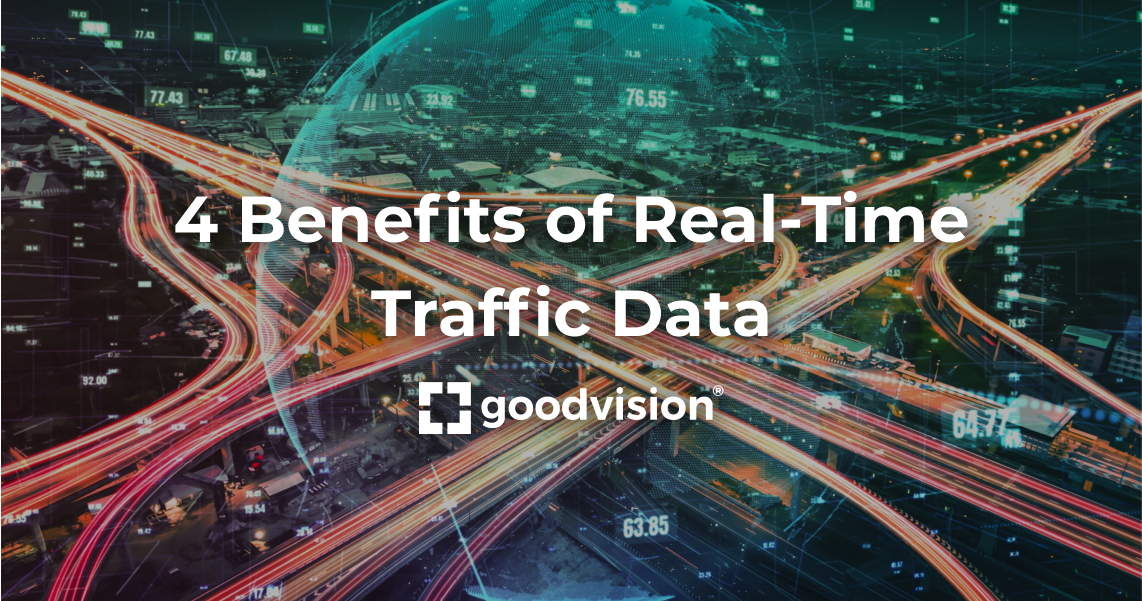4 Benefits of Real-Time Traffic Data
When it comes to traffic control, you need data now. What’s the point of having information on a traffic jam after it’s already cleared up? Each second matters in the world of traffic management, and data collection is no exception.
What is Real-time Data?
Real-time data is data that’s gathered, processed, and analyzed continuously. Whatever information you get from real-time data is available to you immediately after being produced. There is, at most, a couple of milliseconds of lag between gathering real-time data and having it at your disposal. In other words, your data is representative of the present.
When it comes to analysis, real-time data is in a constant flow of processing and analysis. Traditional data gathering is usually done in steps. First, data is gathered (including retrieving previously archived data). Then, after all the gathering is done, the data is processed and analysed.
Real-time data doesn’t follow this method. Instead, this data is constantly going through software that is processing and analysing it as it goes. There is a constant stream of new data coming in, affecting analysis, while at the same time, the older data is being discarded.
For traffic, real-time data make use of conventional data-gathering technology -- cameras and road sensors. Real-time data are especially useful when it comes to traffic control. The main element is making use of software to quickly process and analyse data from traditional infrastructure so that it is readily available to control traffic at intersections and provide relevant traffic information to drivers.
.jpg?width=750&height=422&name=Untitled%20(1).jpg)
Why Real-Time Traffic Data?
So what makes these kinds of data valuable? There are many reasons why this kind of data is becoming more and more used throughout industries, including traffic monitoring. Let’s go through some of the main ones.
#1. Mitigate the Environmental Impact of Traffic Congestion
The negative impact of air pollution is well documented. But you might not know that polluting emissions from automobiles are the main cause of death for approximately 3.3 million people per year–more than AIDS, the flu, and malaria combined.
There’s also a high cost of traffic congestion. According to one study on traffic congestion in the UK, France, Germany, and the US, traffic jams have three primary costs:
- Reduced labour productivity
- Increased price of goods due to additional transportation time
- The derived CO2 emissions
Researchers calculated that congestion cost these four countries about $200 billion and forecast that the cost would balloon to $300 billion by 2030. It’s no wonder, then, that traffic managers are looking for ways to decrease pollution.
Real-time data plays a critical role in reducing vehicle emissions because it can be used to decrease travel time and congestion. Such data can be shared directly with connected drivers via GPS systems, guiding them to take different, less congested routes.
In the long term, real-time traffic data guides the planning and development of a more sustainable infrastructure. For example, a city might choose to build more bike lanes in parts of the city that cyclists seem to avoid or, conversely, place bike-share docks in areas that already have heavy pedestrian traffic.
Other options might include creating incentive programs around using public transportation or building dynamic toll pricing to discourage car use during peak times. These measures rely on real-time data to guide long-term traffic management strategies and policies.
-1.jpg?width=700&height=469&name=Untitled%20(1)-1.jpg)
#2. Improve Safety for Drivers and Pedestrians
Heavy traffic and erratic speeds both increase the risk of traffic accidents and fatalities. Yet traditional traffic safety data analysis methods cannot fully account for these factors because they use aggregated, static data. The result? We might understand the impact of a few key factors on crash frequency, but the data simply doesn’t represent the real conditions at the time of a crash.
Real-time data has proven an invaluable source for improving road safety and reducing traffic fatalities. Pedestrian-counting technology can help identify areas of the city that lack the proper infrastructure to support foot and bicycle traffic there. This data can guide decisions about where to put crosswalks and bike lanes or where to reduce the speed limit to better protect pedestrians.
# 3. Allocate Resources More Effectively
Cities don’t have unlimited resources. Traffic managers must balance competing needs and priorities with finite funds and other limitations. The pandemic further complicated these conditions, and many cities faced unprecedented budget constraints in the face of decreased economic activity. In the US, cities faced budget shortfalls of up to 17%, according to estimates shared with the Pew Charitable Trusts.
With real-time traffic control, traffic managers can allocate resources based on actual infrastructure use. Rather than summarily expanding public transit across the entire city, services could be enhanced in the neighbourhoods that use public transportation the most. Intersections, where there are frequent accidents, could be the first to get improved signalisation or signage.
.jpg?width=700&height=465&name=Untitled%20(2).jpg)
#4. Predict the Future State of Traffic and Transportation Infrastructure
In the context of current, up-to-the-minute traffic conditions, real-time data, of course, provides better insight than historical data or, in some cases, even data that’s only a few hours old. But what about the future? About 55% of the world already lives in urban areas, and the World Bank predicts that 7 out of 10 people will live in cities by 2050. Traffic managers and city planners need to anticipate that growth and think about future transportation needs now.
Combined with historical data, real-time data can help highlight traffic and transportation trends. For instance, there might be an incremental increase in vehicle volume on a certain highway, which accelerates over time. Traffic managers might prioritise infrastructure improvements to that highway to ensure that it can continue to accommodate increased traffic in the coming years.
Artificial intelligence (AI) and real-time traffic data analytics can help you move beyond the basic analysis to uncover less obvious patterns and emerging trends.
Want to learn more about gathering traffic data in real time?



